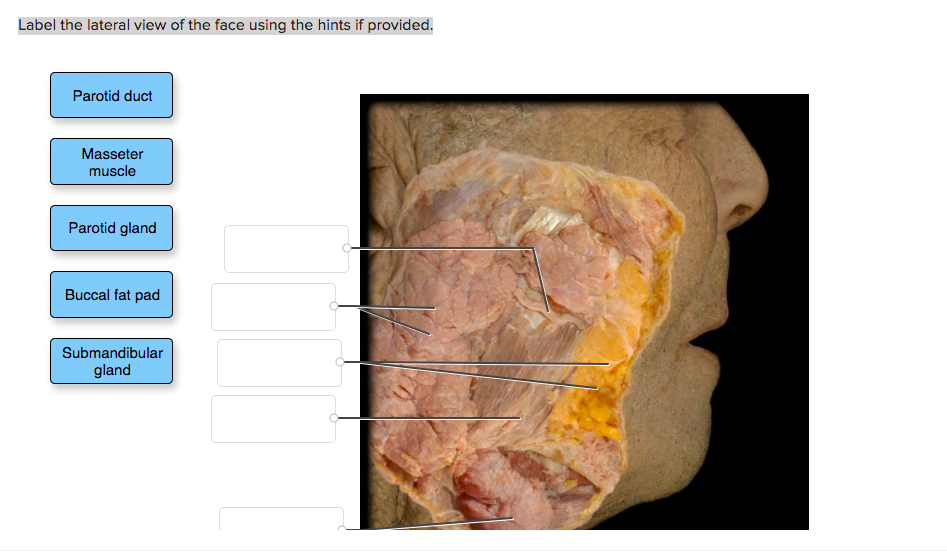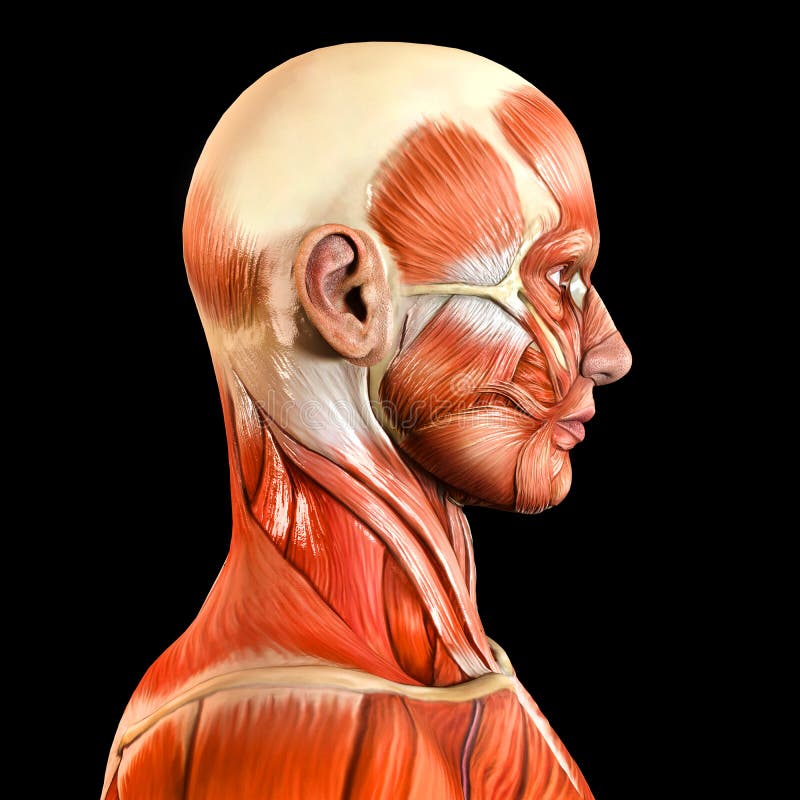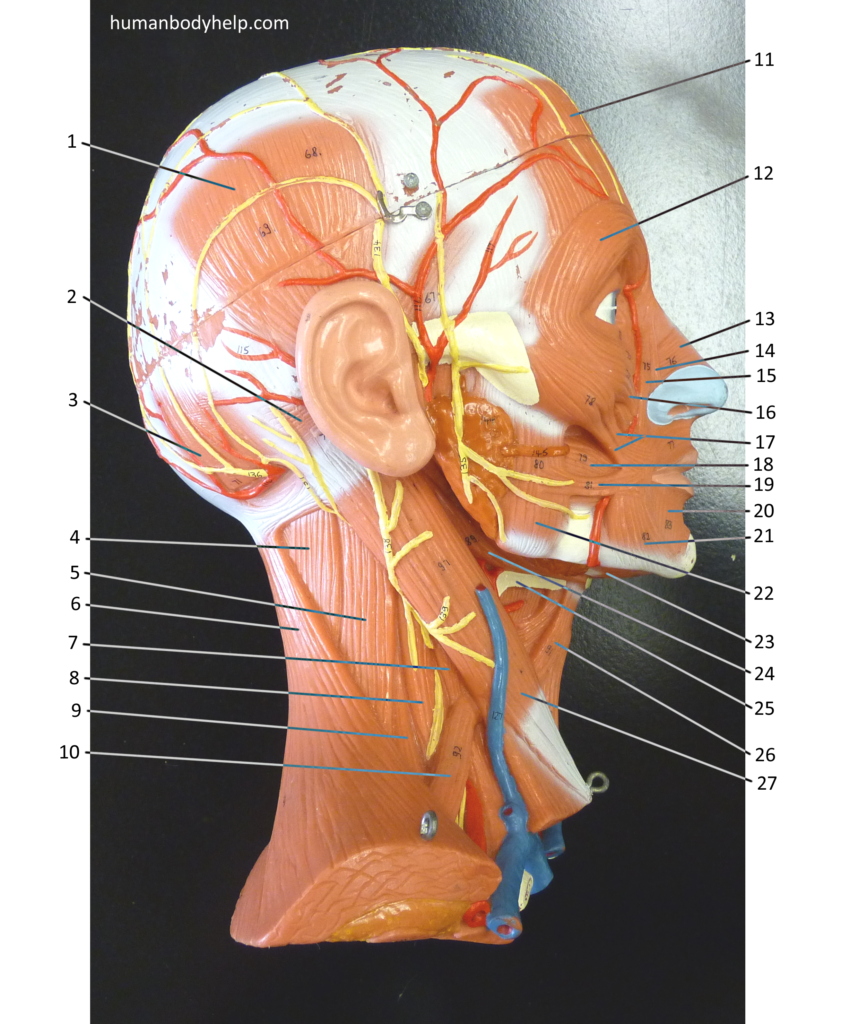Face Male Left Lateral Image

lab practical 1 Anatomy & Physiology 2451 with Dr. Pesthy at Texas
A lateral view of the cranium and face shows bony landmarks. Figure 3. Open in figure viewer PowerPoint. Anthropological landmarks of the face, frontal view, which are described in this paper.. Apparently excessive posterior sloping of the forehead in a lateral view. subjective. Comments: Measurement requires an angle meter, inclined on the.

Male head, lateral view Stock Image C020/0210 Science Photo Library
Mandible Oblique Lateral Recumbent Mandible Inferosuperior Projection Intraoral Mandible Verticosubmental Projection The skull consists of 8 cranial bones and 14 facial bones. We have a separate article on radiographic positioning of the skull.

Muscles of the face (lateral view) Diagram Quizlet
Objective: To characterize the fixation patterns and gaze patterns of the face in lateral view. Design, Setting, and Participants: This was a prospective randomized controlled trial at an academic tertiary medical center.

Muscle of the head, lateral view, illustration Stock Image C039
Figure 7.5 Lateral View of Skull The lateral skull shows the large rounded brain case, zygomatic arch, and the upper and lower jaws. The zygomatic arch is formed jointly by the zygomatic process of the temporal bone and the temporal process of the zygomatic bone.. and the nerve that supplies the muscles of the face. Located at the anterior.

Dentistry lectures for MFDS/MJDF/NBDE/ORE Radiographic Anatomy of
The facial muscles, also called craniofacial muscles, are a group of about 20 flat skeletal muscles lying underneath the skin of the face and scalp. Most of them originate from the bones or fibrous structures of the skull and radiate to insert on the skin.

Face anatomy, Anatomy, Human anatomy
4. Leg 4: lateral wall of the maxillary antrum. 5. Look for fractures and look for: a fluid level (blood from a fracture) in the maxillary antrum; sinus air in the soft tissues or in the orbit. Always apply this rule : If any one of the legs is fractured then always, always, double check whether the other three legs of the midface stool are.

Solved Label the lateral view of the face using the hints
1/7 Synonyms: none The human skull consists of about 22 to 30 single bones which are mostly connected together by ossified joints, so called sutures. The skull is divided into the braincase ( cerebral cranium) and the face ( visceral cranium ). The main task of the skull is the protection of the most important organ in the human body: the brain.

FilLateral head anatomy.jpg Wikipedia, den frie encyklopædi
The skull is the skeletal structure of the head that supports the face and protects the brain. It is subdivided into the facial bones and the cranium, or cranial vault ( Figure 7.3.1 ). The facial bones underlie the facial structures, form the nasal cavity, enclose the eyeballs, and support the teeth of the upper and lower jaws.

Lateral Side Facial Face Muscles Stock Photo Image 48360396
It refers to the area that extends from the superior margin of the forehead to the chin, and from one ear to another. The basic shape of the human face is determined by the underlying facial skeleton (i.e. viscerocranium ), the facial muscles and the amount of subcutaneous tissue present.

6 Lateral view of the Facial Muscles Download Scientific Diagram
The crease or fold of skin running from the lateral margin of the nose, where nasal base meets the skin of the face, to a point just lateral to the corner of the mouth is less prominent than usual. Synonym: Nasolabial crease, underdeveloped. Replaces: Nasolabial crease, hypoplastic; Nasolabial fold, hypoplastic.

Face Diagram Visual Diagram
Nasal Group. The nasal group of facial muscles are associated with movements of the nose and the skin surrounding it.. Nasalis. The nasalis is the largest of the nasal muscles and is comprised of two parts: transverse and alar.. Attachments: Transverse part - originates from the maxilla, immediately lateral to the nose. It attaches onto an aponeurosis across the dorsum of the nose.

Face Male Left Lateral Image
Superior Thyroid Artery. Temporalis Muscle. Lateral view of left face and neck areas. For orientation, superior is toward the top of the image, anterior is toward the left border. The masseter muscle attaches to the zygoma and zygomatic arch and to the ramus and angle of the mandible. The temporalis muscle is seen superior to the zygomatic arch.

Anatomy and Physiology Axial Muscles of the Head, Neck, and Back
The curved part of a bone that gives structural support to the rest of the bone. Above: Markings of the facial bones with the following views: (A) anterior view, (B) lateral view of the left side of the skull, (C) inferior view with the mandible removed, and (D) lateral view of the right side of the skull. Marking.

Lateral Head 1 Human Body Help
A: (Unilateral) Laterally flex the head and neck to the same side Rotate the head and neck to the opposite side (Bilateral) Flex the neck Assist to elevate the ribcage during inhalation O: (Sternal head) Top of the manubrium (Clavicular head) Medial 1/3 of the clavicle I: Mastoid process of temporal bone and the lateral portion of superior nuchal line of occiput

Pin on Muscles of the Face
lateral to include the skin margin orientation portrait detector size 24 cm x 30 cm 2 exposure 75-80 kVp 20-25 mAs SID 100 cm 2 grid yes (this can vary departmentally) Image technical evaluation the petrous ridge should be inferior to the maxillary sinuses assess for rotation via the assessments of the coronoid process symmetry

Muscles of the face and neck lateral view (2) Diagram Quizlet
The lateral borders of the upper face terminate around the temporal region. The upper face region contains the forehead, eyes, and temporal region. Forehead The forehead is the superior region of the upper face region. The superficial layer of the forehead is made up of skin. Deeper to the skin layer of the forehead is the fat pads.